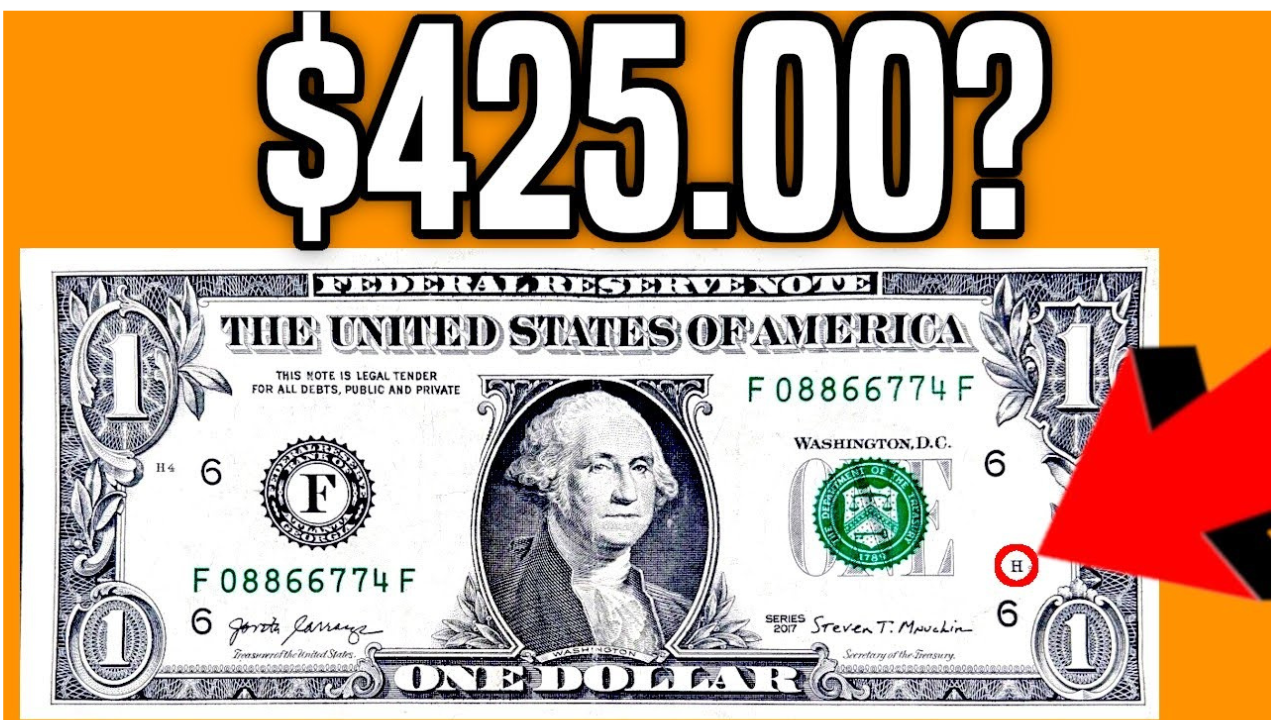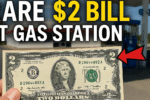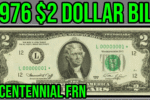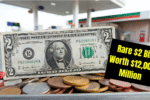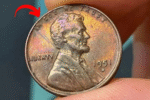Cash Jackpot: The discovery of a rarity among everyday pocket money has caused a stir among currency collectors and casual spenders. A special $1 Star Note from 2013 has emerged as a potential jackpot for those who unwittingly own it. While the exact valuation of $45,100 represents the high end of Star Note collecting, understanding how to identify these valuable pieces could turn your everyday currency into a significant windfall.
What makes Star Note special?
A star note is a replacement banknote issued by the Bureau of Engraving and Printing (BEP) when a misprinted or damaged note is removed during production. To distinguish these replacements, the BEP adds a star (*) mark to the end of the serial number. This simple mark turns an ordinary dollar bill into a potentially valuable collectible.
The Science Behind Star Note Rarity
Star notes account for about 1% of total notes, making them inherently rare. Unlike standard notes, star notes are only printed to replace errors. This means their print runs are limited, which often makes them rare by default. The combination of limited production and collector demand creates the perfect storm for exceptional valuations.
Top 5 Most Valuable $1 Star Notes
1. 1935A Dallas Star Note – Worth Up to $300
The 1935A Series $1 Star Note from the Dallas Federal Reserve District (denoted by the letter “K”) is in high demand. These notes were part of a limited print run, making them rare among collectors. Circulating notes are typically worth between $50 and $100, while uncirculated specimens can be worth between $150 and $300.
2. 1963B New York Star Note – Worth Up to $200
The 1963B Series $1 Star Note issued by the New York Federal Reserve District (“B”) is another valuable find. Despite the large print run, some Star Notes from this series are considered rare due to specific printing details. Collectors value circulating notes between $30 and $60, while uncirculated notes range from $100 to $200.
3. 1988A Atlanta Star Note – Worth Up to $150
The 1988A Series $1 Star Note from the Atlanta Federal Reserve District (“A”) is of interest to collectors. While not very rare, there is a demand for certain Star Notes from this series. Values for circulating notes range from $25 to $50, and uncirculated notes can be worth between $75 and $150.
4. 1995 Chicago Star Note – Worth Up to $120
The 1995 Series $1 Star Note issued by the Chicago Federal Reserve District (“C”) is of interest to collectors. These notes are relatively common, but some Star Notes are more desirable. Values for circulating notes generally range from $20 to $40, while uncirculated notes are worth between $60 and $120.
5. 2013 San Francisco Star Note – Worth up to $5,000
The 2013 Series $1 Star Note from the San Francisco Federal Reserve District (“F”) is the most recent in the top five. Uncirculated or clear examples of the rare 2013 $1 Star Note have reportedly sold for several thousand dollars. Even circulated notes, if verified as part of a misprinted batch, can sell for hundreds.
$45,100 Jackpot: Extremely Rare Error Note
Mismatched Serial Number
The highest-priced star bills often have printing mistakes that make them one-of-a-kind. TikToker and rare coin collector TreasureTown shared one of many examples of dollar bills that sold for a hefty price. The bill in the TikTok video looks like any other bill you might find in your wallet, with markings on it showing where it was folded. The particular bill that TreasureTown showed in the video is missing the star and still has the lettering in the serial number to the right of Washington’s face.
Duplicate Serial Numbers
Collectors have specifically identified a short list of these star notes with overlapping serials. If your note matches one of these, it could sell for $2,000 to $5,000 or even more at auction. When collectors find matching pairs, the value can rise rapidly.
How to identify your million-dollar note
Step 1: Check the star symbol
Star notes are easy to identify. Just check the serial number: a ★ appears at the end of the serial (for example, B12345678★). This replaces the last letter used in standard serial numbers.
Step 2: Focus on the Series and Federal Reserve District
Look for specific combinations that collectors love:
- 2013 Series with “B” prefix (New York)
- 1935A Series with “K” prefix (Dallas)
- Any note with a print run of less than 640,000
Step 3: Use the online verification tool
Quickly look up the production number of your Star Notes by entering the denomination, series, and serial number. Ideal for collectors seeking rarity information. After using the tool, you discover that only 320,000 copies were printed. It is considered rare, and such a note in good condition could be worth $15 or more.
Understanding Print Run Rarity
What makes a print run valuable
640,000 is generally the limit of run sizes when star notes start to be considered more rare. Several smaller runs have been printed of between 160,000 and 640,000 notes. Some have been printed in quantities of 16,000 or less.
The Economics of Rarity
Pro tip: The 3.2 million run note is much more common than the 320,000 run note, potentially affecting the value by 5-10 times or more!
Sell your star notes for maximum value
Professional grading
The EPQ/PPQ designation can increase the value by 30-100% compared to the same grade without this designation. Professional grading services such as PMG or PCGS can authenticate and grade your note, significantly increasing its market value.
Where to Sell
Online marketplaces such as eBay, Amazon or Whatnot are a popular choice for selling star notes. These platforms allow you to set your own price, and you can reach a wide audience. Currency dealers may be interested in purchasing your star note if they want to add it to their collection or inventory.
Advanced Storage Strategies
Fancy Serial Numbers
Lucky numbers are another specialty for paper currency collectors. This fancy serial number shows five zeros followed by three eights. In some Asian cultures, the number 8 is considered lucky. Star notes with fancy serial numbers are extremely rare to find and are highly prized by collectors. These combinations can increase the value dramatically.
Error Notes
Off-center printing where design elements are significantly shifted in one direction. Smudges, ink leaks, or incorrect colors that have passed quality control. These printing errors can turn a normal star note into a museum-quality piece.
tar Note Value Comparison Table
| Series | Federal Reserve | Print Run Size | Circulated Value | Uncirculated Value |
|---|---|---|---|---|
| 1935A | Dallas (K) | Limited | $50-$100 | $150-$300 |
| 1963B | New York (B) | Moderate | $30-$60 | $100-$200 |
| 1988A | Atlanta (A) | Moderate | $25-$50 | $75-$150 |
| 1995 | Chicago (C) | Common | $20-$40 | $60-$120 |
| 2013 | San Francisco (F) | Ultra-Rare | $100-$2,000 | $2,000-$5,000 |
| 2013 | New York (B) | Error/Duplicate | $5,000-$15,000 | $15,000-$45,100 |
The Future of Star Note Collecting
Some experts believe that the value of these flawed notes will increase over time as more and more collectors become aware of their rarity. As awareness grows and more people check their currency, the supply of undiscovered star notes will decrease, potentially driving the value even higher.
Quick FAQs
Q: How can I tell if my Star Note is worth thousands?
Answer: Use a lookup tool to check rarity, then compare auction sales on sites like eBay or Heritage Auctions to estimate market value. Notes printed in numbers of 640,000 or less are considered rare, but modern notes under 250,000 are extremely rare.
Q: Are all Star Notes valuable?
Answer: Not all Star Notes are valuable, but certain characteristics can make some worth far more than face value. Some rare examples have sold for over $100 at auctions and on online marketplaces like eBay or Heritage Auctions.
Q: What should I do if I find a rare Star Note?
Answer: Put it in protective storage, verify its rarity using online tools, and consider professional grading before selling. Consider grading: If the note is still flat, bright and free of handling marks, a professional grader from PMG or PCGS can unlock the higher end of the price ranges above.
